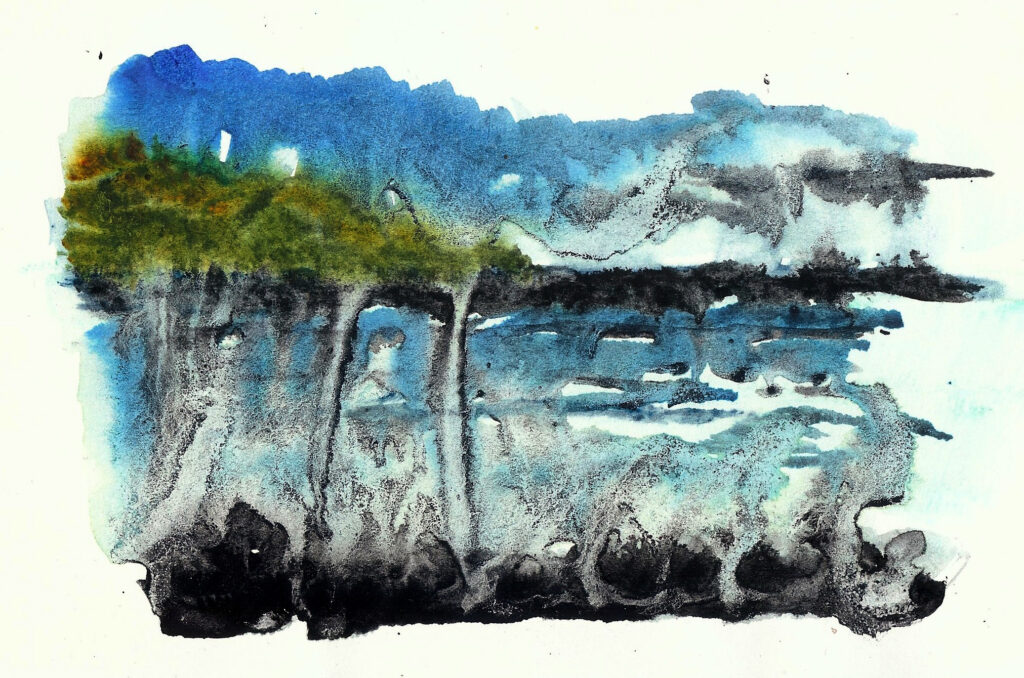There have been many proposed explanations for why sea shanties have recently gone viral. Ever since Nathan Evans released his viral TikTok version of the “Wellerman,” everyone from Stephen Colbert to Rolling Stone to CNN and the New York Times has covered the trend. Rolling Stone called the trend “unexpected” and “unprecedented” and noted that the “Wellerman” was streamed over two million times in a single week alone. Why the sudden interest in the sea shanty? CNN’s AJ Willingham writes, “It’s folly to examine why some things go viral on the internet, and by doing so one risks discounting the beauty of the simplest answer: They just do.”
I disagree.
The sea shanty, according to the New Yorker’s Amanda Petrusich, was originally a song sung by sailors to pass the time at sea or to “synchronize their labor.” Petrusich writes, “It seems possible that after nearly a year of solitude and collective self-banishment, and of crushing restrictions on travel and adventure, the chantey might be providing a brief glimpse into a different, more exciting way of life, a world of sea air and pirates and grog, of many people singing in unison, of being free to boldly take off for what Melville called the “true places,” the uncorrupted vistas that can’t be located on any map.”
I think there’s something more going on. Yes, we all dream of traveling again, but I think the sea shanty is tapping into a collective social consciousness that has become a little unmoored, a collective unconscious that has literally found itself adrift.
In this era of COVID-19 self-isolation our homes can sometimes feel as claustrophobic as a ship at sea. Here we are, isolated from society at large, and yet often claustrophobically close to our families, roommates, or lovers. Perhaps we have all begun to collectively live our lives like sailors—every now and then seeing the grocery store rise up from the horizon, where we gather provisions for another stint in the abyss.
Virality taps into something in the collective mind. Perhaps we sense the possibility of normalcy not far off in the horizon. Like the watchman of old sighting star or borealis, we have heard rumor of a vaccine that might free us from this collective madness, but it could also just be the glimmer of the moon on the water, a mirage of land and normalcy. There are more viral variants after all.

About That Wellerman
What is it really about “The Wellerman” that really taps into the collective psyche? I can’t help but hear Melville’s Ismael “growing grim about the mouth” fighting another “damp, drizzly November” of the soul. The shanty does indeed speak to another time and place, a world of adventure, travel, a world encompassed by the unknown. Don’t we all wish we could take to sea, and leave behind our little cabins of quarantine?
There are several lines in “The Wellerman” that particularly resonate with 2021. Remember back in 2020, a thousand years ago, when the quarantine began, and we were told we’d only have to do this for two weeks and then everything would presumably return to normal? “The Wellerman” captures this precisely here: “She had not been two weeks from shore / when down on her a right whale bore.” Ah yes, how quickly Fortuna’s wheel turns a two-week voyage into a year. The whale drags the boat on and on, and so we sit in front of our Netflix, dragged through the entertainment abyss. Remember when all this felt a little bit like a refreshing vacation? Remember when we were fresh in all this, thrilled to sit in our socks and sleepwear, watching daytime T.V.? Yes, it almost had the feeling of an adventure. But how quickly even the most daring adventure becomes monotony, as surely all sailors learned over time.
We’ve been long at sea. “One day, when the tonguing’ is done / we’ll take our leave and go.”
What does tonguing mean in “The Wellerman?” According to Royal Museums Greenwich, tonguing is the process of cutting up a caught whale. The tonguers were the men who would butcher the whales when they were hauled from the sea. The song is about how we all long for the workday to end. How we all long for change when we find ourselves in frustrating circumstances.
Sea shanties are “call and response” songs. They are sung communally and community is something we long for more than anything now. If only we could all be in a room full of strangers singing sea shanties.
The sea shanty trend reminds us once again about the importance of poetry—its power to bring us together at a time when we are so far apart, it’s power to capture the collective longing of our culture. I don’t think the sea shanty is a silly inexplicably viral meme. It taps into an authentic yearning within us all.
About the Writer
Janice Greenwood is a writer, surfer, and poet. She holds an M.F.A. in poetry and creative writing from Columbia University.
